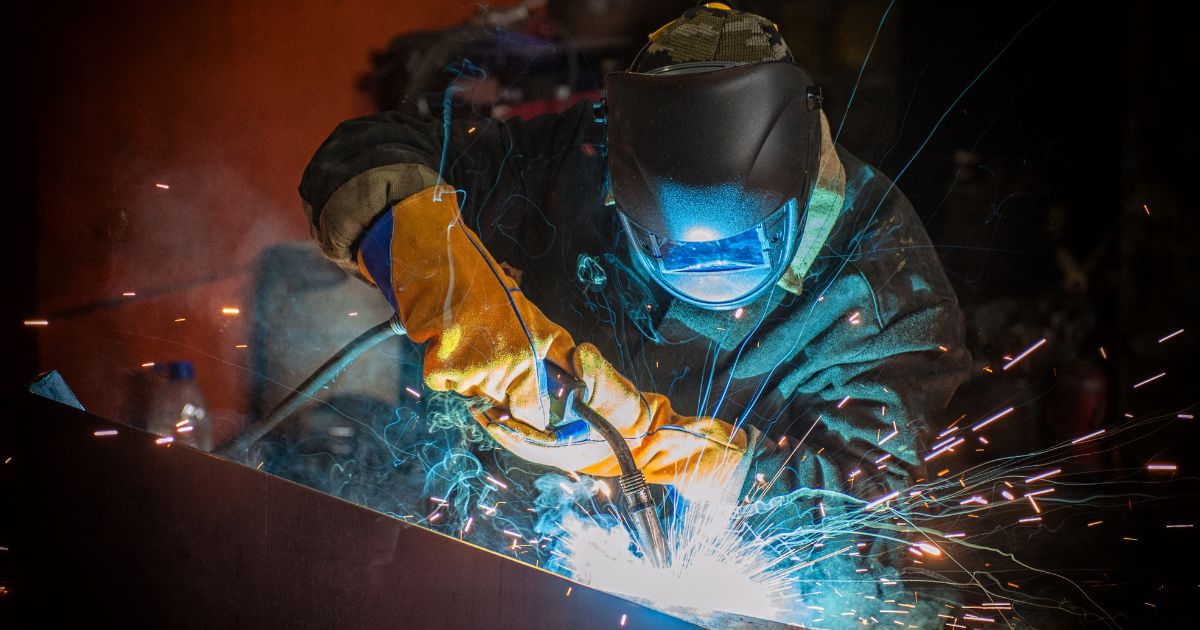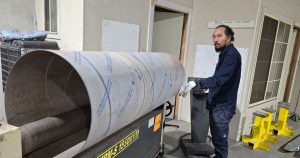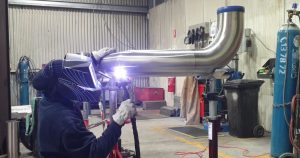Stages of a Custom Metal Fabrication Project in Australia
In custom metal fabrication, each project follows a clear set of stages that transform a concept into a finished, functional product. These stages are critical in ensuring the outcome is precise, durable, and compliant with Australian standards. Whether it’s a stainless steel tank for food processing, a structural steel frame, or a pressure vessel, the process involves careful planning, fabrication expertise, and rigorous testing. Broadly speaking, the stages include design and drawing review, fabrication and welding, finishing, and installation — each with its own requirements and compliance measures. Let’s take a closer look.
1. Drawing and Design Review
The first stage of any fabrication project is the review of drawings and specifications. Drawings serve as the blueprint for the entire job, detailing every component, dimension, and joint. They are usually created using CAD or 3D modelling software, which allows for highly accurate designs that can be reviewed and adjusted before fabrication begins.
During the review, fabricators confirm that designs meet project requirements and comply with relevant standards such as AS/NZS 5131 for structural steel or AS/NZS 1554 for welding. The review may also involve checking materials, load requirements, and whether hygiene standards (such as for food and beverage applications) must be met. Multiple drawings may exist — one for component parts, another for assemblies, and a final set for the completed structure. Each document must be checked and approved before the project can move forward.
2. Fabrication and Welding
Once designs are approved, the project moves to the fabrication floor. This is where raw materials are cut, formed, machined, and prepared for assembly. Common processes include cutting, punching, shearing, bending, and machining, each chosen based on the type of metal and end use of the product. Stainless steel, mild steel, aluminium, and other alloys are used depending on the industry and project scope.
Welding is a central part of this stage. Different methods — MIG, TIG, or stick welding — may be employed, and all work must comply with AS/NZS 1554. Welders are qualified under Australian standards to ensure structural integrity and safety. Compliance with Safe Work Australia’s Code of Practice for Welding Processes also ensures that worker health and safety risks are properly managed.
The fabrication shop is often a diverse workspace where various processes take place under one roof. Having all these services in-house means the project can be carried out more efficiently, with fewer delays and greater control over quality.
3. Assembly and Finishing
Once the individual components have been fabricated, they are assembled into the final product. Assembly may involve multiple joining techniques, including different welding processes, fastening systems, or riveting. Precision is crucial here to ensure that the product meets its functional requirements and dimensional tolerances.
After assembly, finishing processes are applied. Depending on the project, this may involve polishing or electropolishing for stainless steel used in hygienic industries, galvanising for corrosion protection, or powder coating and painting for durability and aesthetics. Surface finishing also ensures compliance with industry-specific regulations, such as hygiene standards in food processing. Each finish is applied with both performance and appearance in mind, providing a complete solution ready for use.
4. Delivery, Installation, and Maintenance
The final stage of a custom metal fabrication project involves delivery and installation. Proper handling, lifting, and positioning are essential to maintain the integrity of the fabricated product. On-site installation must comply with Safe Work Australia regulations and site-specific safety requirements. This may include anchoring, alignment, and integration with existing systems.
In some cases, additional value-added services such as packaging and protective crating are provided, especially when equipment is being transported long distances or exported. Ensuring safe delivery and installation reduces downtime and adds value to the client’s investment.
Ongoing maintenance is also an important consideration. Regular inspections, cleaning, and servicing extend the lifespan of the product and ensure continued compliance with Australian standards. At Topweld, we provide both installation and long-term maintenance support to help clients get the most from their fabricated systems.
Conclusion
The stages of a custom metal fabrication project — from design review through fabrication, assembly, finishing, and installation — ensure that every detail is carefully managed. Each stage builds on the last, delivering a final product that is not only functional and durable but also compliant with the strict standards required in Australia.
At Topweld General Engineering, we provide end-to-end custom fabrication services under one roof, backed by skilled professionals and industry expertise. Whether you need structural steel, stainless tanks, or specialised equipment, our team ensures precision, compliance, and long-lasting performance.




